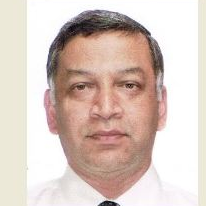Understanding and Managing Extreme Wildland Fires
A special issue of Fire (ISSN 2571-6255). This special issue belongs to the section "Fire Science Models, Remote Sensing, and Data".
Deadline for manuscript submissions: closed (31 December 2023) | Viewed by 8045
Special Issue Editors
Interests: computational fluid dynamics, enclosure fire dynamics; wildland fire modelling; fire detection and suppression; fire risk analysis
Special Issues, Collections and Topics in MDPI journals
Special Issue Information
Dear Colleagues,
We are pleased to invite you to contribute to this Special Issue of Fire entitled “Understanding and Managing Extreme Wildland Fires”. The occurrence of extreme wildfires is increasing considerably around the globe. Unfortunately, we only have a limited understanding of the phenomena driving these fires.
This Special Issue will focus on topics including pyro-cumulonimbus formation, ember generation, transport and storms, fire whirls, fire tornados, eruptive fire, vortex-driven lateral spread, and fire merger with a view to developing an improved knowledge of the hazards, which can inform fire management strategies.
In this Special Issue, original research articles and reviews are welcome. Research areas may include (but are not limited to) the following:
- Case studies or data-driven empirical studies of extreme fire events around the globe;
- Numerical simulation or empirical studies of the phenomena driving extreme wildfire events (pyrocumulonimbus formation, ember storms, vorticial fire events, eruptive fire, and merger);
- Development of models or correlations, including machine-learning models, for the prediction of extreme fire behaviour;
- Proposed strategies for improving the operational management of extreme wildfires and post-fire management.
We look forward to receiving your contributions.
Prof. Dr. Khalid Moinuddin
Dr. Duncan Sutherland
Guest Editors
Manuscript Submission Information
Manuscripts should be submitted online at www.mdpi.com by registering and logging in to this website. Once you are registered, click here to go to the submission form. Manuscripts can be submitted until the deadline. All submissions that pass pre-check are peer-reviewed. Accepted papers will be published continuously in the journal (as soon as accepted) and will be listed together on the special issue website. Research articles, review articles as well as short communications are invited. For planned papers, a title and short abstract (about 250 words) can be sent to the Editorial Office for assessment.
Submitted manuscripts should not have been published previously, nor be under consideration for publication elsewhere (except conference proceedings papers). All manuscripts are thoroughly refereed through a single-blind peer-review process. A guide for authors and other relevant information for submission of manuscripts is available on the Instructions for Authors page. Fire is an international peer-reviewed open access monthly journal published by MDPI.
Please visit the Instructions for Authors page before submitting a manuscript. The Article Processing Charge (APC) for publication in this open access journal is 2400 CHF (Swiss Francs). Submitted papers should be well formatted and use good English. Authors may use MDPI's English editing service prior to publication or during author revisions.
Keywords
- wildfire
- extreme
- megafires
- physics-based simulation
- coupled fire atmosphere events
- pyro-cumulonimbus
- empirical fire studies
- ember generation
- ember transport
- ember storms
- fire whirls
- fire tornados
- vortex-driven lateral spread
- and fire merger
Benefits of Publishing in a Special Issue
- Ease of navigation: Grouping papers by topic helps scholars navigate broad scope journals more efficiently.
- Greater discoverability: Special Issues support the reach and impact of scientific research. Articles in Special Issues are more discoverable and cited more frequently.
- Expansion of research network: Special Issues facilitate connections among authors, fostering scientific collaborations.
- External promotion: Articles in Special Issues are often promoted through the journal's social media, increasing their visibility.
- Reprint: MDPI Books provides the opportunity to republish successful Special Issues in book format, both online and in print.
Further information on MDPI's Special Issue policies can be found here.






